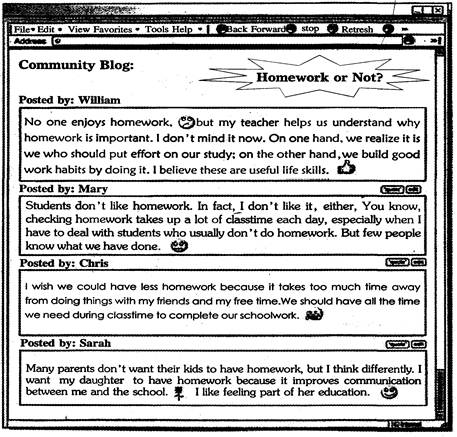题目内容
Every year, we celebrate many special days─Mother’s Day, Father’s Day, and New Year’s Day. In some countries, there is a special day for playing tricks on others. In North America and parts of Europe, this day is known as April Fool’s Day, and is celebrated on April 1.
Many people believe that the French started April Fool’s Day. Centuries ago, New Year’s Day in Europe was April 1. In 1582, the calendar changed and King Charles IX of France moved it to January 1.
Some people did not like this, and chose to keep April 1 as New Year’s Day. Many called these people ‘April fools’ and played jokes and tricks on them. Over time, April 1 became a day to have fun in France. It then spread to England and Scotland, and later, to North America.
On April Fool’s Day, jokes are common. In the United States, for example, a person may move a friend’s clock ahead one hour, or change the sugar and salt. In Scotland, April Fool’s Day lasts for two days. The second day is called ‘Taily Day’─for one’s ‘tail’. On this day, people might secretly put a sign saying ‘kick me’ on a person’s back or behind. Other countries have their own ‘Fool’s Day’. In Spain and Mexico, people play tricks on each other on December 28. In India, it happens on March 31.
In many countries around the world, April 1 is a day of fun. Jokes bring about a lot of laughter, and many shouts of ‘April Fool’!
小题1:It is said that people first celebrated ‘Fool’s Day’ in .
小题2: In North America, ‘Fool’s Day’ is celebrated on .
小题3:People are allowed to while celebrating ‘Fool’s Day’.
小题4:Which country is NOT mentioned (提到) in the passage as celebrating ‘Fool’s Day’?
小题5:Over time, April 1 became a day to have fun in France. It then spread to England …. Here “spread” means .
Many people believe that the French started April Fool’s Day. Centuries ago, New Year’s Day in Europe was April 1. In 1582, the calendar changed and King Charles IX of France moved it to January 1.
Some people did not like this, and chose to keep April 1 as New Year’s Day. Many called these people ‘April fools’ and played jokes and tricks on them. Over time, April 1 became a day to have fun in France. It then spread to England and Scotland, and later, to North America.
On April Fool’s Day, jokes are common. In the United States, for example, a person may move a friend’s clock ahead one hour, or change the sugar and salt. In Scotland, April Fool’s Day lasts for two days. The second day is called ‘Taily Day’─for one’s ‘tail’. On this day, people might secretly put a sign saying ‘kick me’ on a person’s back or behind. Other countries have their own ‘Fool’s Day’. In Spain and Mexico, people play tricks on each other on December 28. In India, it happens on March 31.
In many countries around the world, April 1 is a day of fun. Jokes bring about a lot of laughter, and many shouts of ‘April Fool’!
小题1:It is said that people first celebrated ‘Fool’s Day’ in .
| A.the United States | B.France | C.Scotland | D.Spain |
| A.April 1 | B.April 2 | C.December 28 | D.March 31 |
| A.kick your friends in the behind |
| B.move a friend’s clock ahead one hour |
| C.play jokes and tricks on your friends |
| D.take a holiday from work for two days |
| A.England. | B.India. | C.Mexico. | D.Japan. |
| A.盛行 | B.流传 | C.接受 | D.发展 |
小题1:B
小题2:A
小题3:C
小题4:D
小题5:B
试题分析:本文叙述了愚人节的起源和活动内容。愚人节起源于法国,后来传到了英国,苏格兰和北美地区。在愚人节这天人们跟朋友开玩笑,可以戏弄朋友。
小题1:细节理解题。根据第二段的Many people believe that the French started April Fool’s Day.可知据说愚人节起源于法国,故选B。
小题2:细节理解题。根据第二段的April 1 became a day to have fun in France. It then spread to England and Scotland, and later, to North America.可知在北美洲,愚人节是在4月1日庆祝的。故选A。
小题3:细节理解题。根据第三段的Many called these people ‘April fools’ and played jokes and tricks on them.可知在愚人节这天人们可以戏弄朋友和跟朋友开玩笑。故选C。
小题4:细节理解题。文中提到了England ,Scotland, Spain, Mexico和 India,庆祝愚人节,但是没有提到Japan,故选D。
小题5:词义猜测题,。根据to England and Scotland, and later, to North America可知愚人节一开始在法国后来到了英国,苏格兰,又来又到了北美地区,这是在流传,故选B。

练习册系列答案
相关题目

